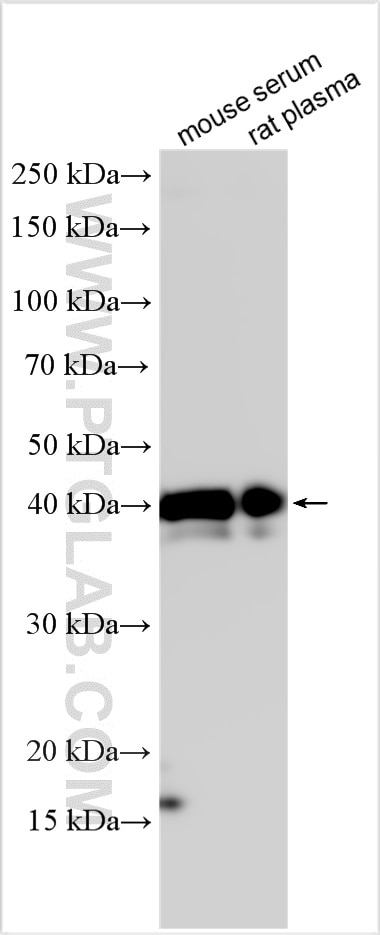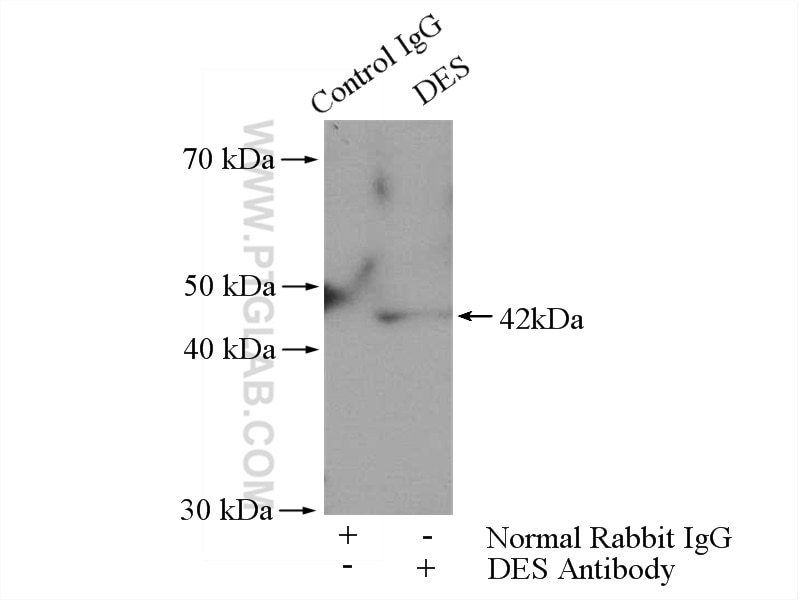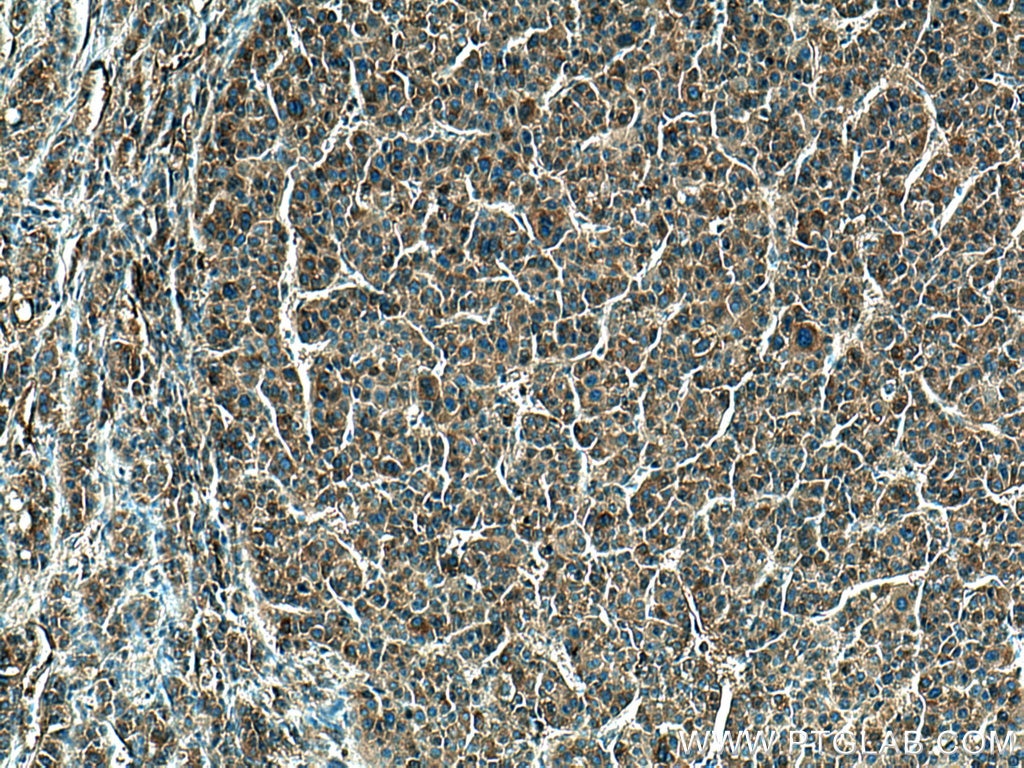Anticorps Polyclonal de lapin anti-Haptoglobin
Haptoglobin Polyclonal Antibody for WB, IP, IHC, ELISA
Hôte / Isotype
Lapin / IgG
Réactivité testée
Humain, rat, souris
Applications
WB, IP, IF, IHC, ELISA
Conjugaison
Non conjugué
N° de cat : 16665-1-AP
Synonymes
Galerie de données de validation
Applications testées
| Résultats positifs en WB | sérum de souris, cellules HEK-293, plasma humain, tissu hépatique humain |
| Résultats positifs en IP | cellules HepG2 |
| Résultats positifs en IHC | tissu de cancer du foie humain, tissu de cancer du poumon humain il est suggéré de démasquer l'antigène avec un tampon de TE buffer pH 9.0; (*) À défaut, 'le démasquage de l'antigène peut être 'effectué avec un tampon citrate pH 6,0. |
Dilution recommandée
| Application | Dilution |
|---|---|
| Western Blot (WB) | WB : 1:2000-1:16000 |
| Immunoprécipitation (IP) | IP : 0.5-4.0 ug for 1.0-3.0 mg of total protein lysate |
| Immunohistochimie (IHC) | IHC : 1:50-1:500 |
| It is recommended that this reagent should be titrated in each testing system to obtain optimal results. | |
| Sample-dependent, check data in validation data gallery | |
Applications publiées
| WB | See 6 publications below |
| IHC | See 3 publications below |
| IF | See 1 publications below |
Informations sur le produit
16665-1-AP cible Haptoglobin dans les applications de WB, IP, IF, IHC, ELISA et montre une réactivité avec des échantillons Humain, rat, souris
| Réactivité | Humain, rat, souris |
| Réactivité citée | Humain |
| Hôte / Isotype | Lapin / IgG |
| Clonalité | Polyclonal |
| Type | Anticorps |
| Immunogène | Haptoglobin Protéine recombinante Ag10143 |
| Nom complet | haptoglobin |
| Masse moléculaire calculée | 281aa,31 kDa; 228aa,25 kDa |
| Poids moléculaire observé | 42 kDa |
| Numéro d’acquisition GenBank | BC058031 |
| Symbole du gène | HP |
| Identification du gène (NCBI) | 3240 |
| Conjugaison | Non conjugué |
| Forme | Liquide |
| Méthode de purification | Purification par affinité contre l'antigène |
| Tampon de stockage | PBS avec azoture de sodium à 0,02 % et glycérol à 50 % pH 7,3 |
| Conditions de stockage | Stocker à -20°C. Stable pendant un an après l'expédition. L'aliquotage n'est pas nécessaire pour le stockage à -20oC Les 20ul contiennent 0,1% de BSA. |
Informations générales
HP(Haptoglobin) is also named as zonulin and belongs to the peptidase S1 family. HP, a plasma glycoprotein that binds free hemoglobin, has a tetrameric structure of 2 alpha(16 kDa and 9 kDa) and 2 beta(40 kDa) polypeptides that are covalently associated by disulfide bonds. In most species, apart from ruminants, Hp has a molecular mass of 100 kDa, consisting of two subunits of 40 kDa and two subunits of 9 kDa, although in a few species, such as man, genetic variant of Hp forms polymers of higher mass(PMID:2361363). Recent studies of haptoglobin show that certain oligosaccharide structures predominate in different diseases. For example, a highly-fucosylated structure is found in breast cancer and ovarian cancer, highly-sialylated structures in Crohn's disease and highly branched structures in alcoholic liver disease and fucosylated haptoglobin is a good serum marker for pancreatic cancer.(PMID:16385567).
Protocole
| Product Specific Protocols | |
|---|---|
| WB protocol for Haptoglobin antibody 16665-1-AP | Download protocol |
| IHC protocol for Haptoglobin antibody 16665-1-AP | Download protocol |
| IP protocol for Haptoglobin antibody 16665-1-AP | Download protocol |
| Standard Protocols | |
|---|---|
| Click here to view our Standard Protocols |
Publications
| Species | Application | Title |
|---|---|---|
Theranostics Interleukin-6 Induced "Acute" Phenotypic Microenvironment Promotes Th1 Anti-Tumor Immunity in Cryo-Thermal Therapy Revealed By Shotgun and Parallel Reaction Monitoring Proteomics. | ||
Clin Transl Med Single-cell transcriptomes reveal heterogeneity of high-grade serous ovarian carcinoma. | ||
Antioxid Redox Signal Control of Oxidative Stress and Inflammation in Sickle Cell Disease with the Nrf2 Activator Dimethyl Fumarate. | ||
World J Gastroenterol N-linked glycoproteomic profiling in esophageal squamous cell carcinoma | ||
Oncol Rep Proteomic-based analysis for identification of potential serum biomarkers in gallbladder cancer. |













